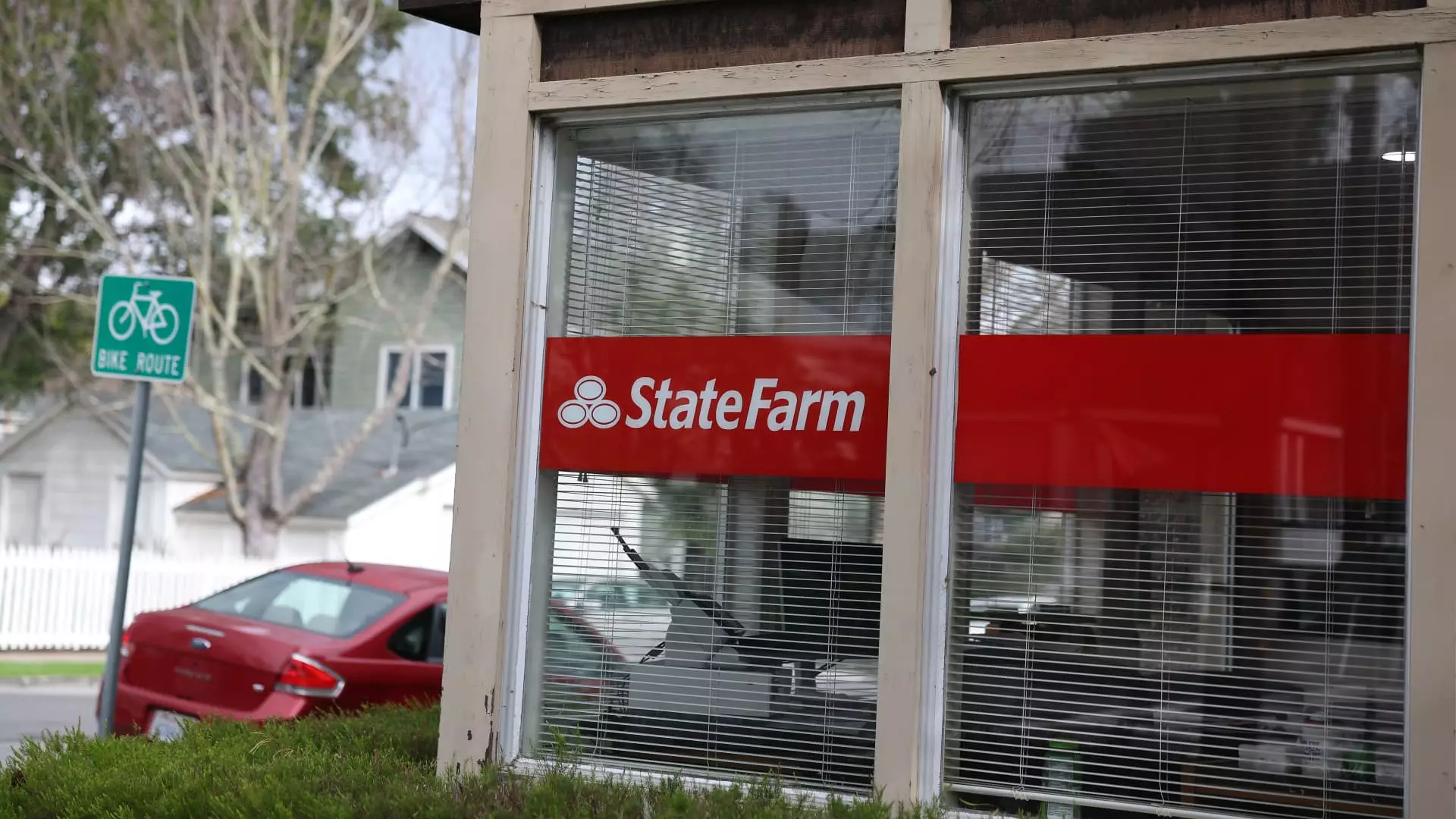As California grapples with the fallout of agonizing wildfires and blooms of economic instability, the insurance landscape resembles a ship on stormy seas—with State Farm at the helm. The recent move by State Farm to pursue an emergency rate increase of 17% for homeowners marks a pivotal moment: a desperate cry for help amid rising costs and a precarious financial forecast. This isn’t merely a question of dollars and cents; it’s an affront to everyday Californians who are already weathering the storm of calamity.
State Farm General, a significant player in California’s insurance market, is flailing. Approximately 3 million policies are at stake, and the company has already suffered losses exceeding $2.75 billion due to the catastrophic wildfires that have wreaked havoc in Los Angeles. With an estimated total loss nearing $7.6 billion and potential capital insolvency in sight, it’s a dire situation—akin to the Titanic moments before its fateful encounter with the iceberg. One has to wonder: Does State Farm truly have the interests of its policyholders at heart, or is this merely an exercise in self-preservation?
The Wildfire Fallout and Suffering Rates
Diving deeper, we must address the colossal implications of these rate hikes. The California Department of Insurance cautions that if the proposed increases go unchecked, it could lead to millions of homeowners being left vulnerable and unprotected—essentially tossing them into the abyss while the insurers keep the lifeboats for themselves. Nicely put, it’s a classic case of letting the rich get richer at the expense of those who can least afford it. In this context, the 17% increase—the lower figure from an initial 22% ask—is hardly a reason to celebrate; it’s an acknowledgment of a deep-seated, systemic failure that has led us to this critical juncture.
Thanks to the incessant rise in the frequency and scale of natural catastrophes across California, the insurance industry has been buckling for years. The core of the problem lies not solely in the wildfires but in a longstanding structural imbalance: insurers are consistently paying out more in claims than they are receiving in premiums. The consequences are evident: major companies like State Farm have effectively stopped writing new homeowners insurance policies, leaving consumers with limited options—essentially trapping them in a precarious position.
A Toxic Mix: Financial Stability and Regulatory Challenges
The confusing regulatory landscape doesn’t help either. Insurance Commissioner Ricardo Lara has so far shown reluctance to approve significant rate hikes. The state’s “Sustainable Insurance Strategy” intends to reshape how insurers calculate rates, potentially offering a lifeline amid the tumult. However, whether this initiative can genuinely resolve the underlying problems remains to be seen. The introduction of catastrophe modeling and reinsurance costs into rate calculations hints that we’re moving towards a more realistic approach to risk assessment—but the question begs: is this merely a Band-Aid on a gaping wound?
Opposition is forming against the proposed hikes, with advocacy groups like Consumer Watchdog cautioning that State Farm has failed to substantiate its claims. The organization’s dissatisfaction stems not only from the financial requirements but also from the perceived inconsistency within the company’s approach—how can we trust their revised rate request when they once sought a significantly larger increase?
Consumer Perspective: The Fight for Affordable Coverage
Ultimately, the voices that matter most—the consumers—are being sidelined in this corporate struggle between giant insurers and regulatory hurdles. The looming threat of skyrocketing insurance premiums jeopardizes financial stability for thousands of middle-class families. Homeownership, once a hallmark of the American Dream, is now threatened in a state that boasts millions of million-dollar homes but increasingly unaffordable insurance premiums.
Furthermore, the suggestion that State Farm could tap into $400 million from its parent company to stabilize its finances raises additional questions. Is this a genuine effort to protect policyholders or a façade for a company that prioritizes profits over obligations?
As California stands on the precipice of a residential insurance crisis, the next steps taken will determine not just the fate of State Farm, but the futures of countless families across the Golden State. Judging by the current trajectory, the outlook is anything but sunny.

